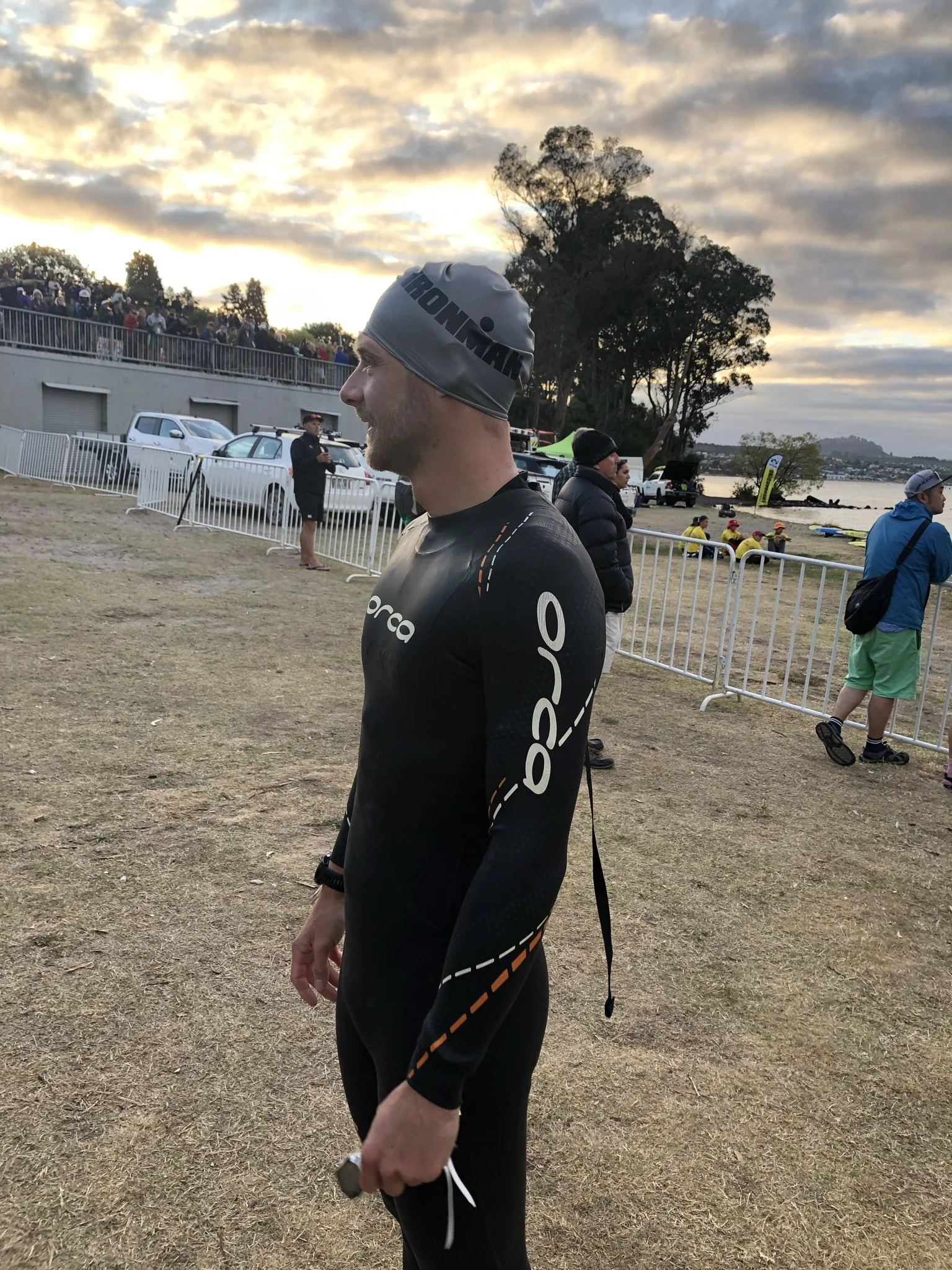Wetsuit Tips for Comfort and Speed
For many triathletes, the wetsuit is one of the most important pieces of gear — and one of the most misunderstood. A properly fitting and well-used wetsuit can make you faster, warmer, and more confident in the water. But an uncomfortable or poorly worn suit can lead to panic, restricted movement, and a rough start to your race.
Here’s how to get the most out of your wetsuit, from choosing the right one to putting it on (and taking it off) like a pro.
Why a Wetsuit Matters
A triathlon wetsuit isn’t just about keeping you warm it’s about performance and safety.
Benefits:
Buoyancy: Wetsuits help lift your body higher in the water, improving body position and reducing drag.
Speed: The smooth neoprene surface reduces friction, helping you glide more efficiently.
Warmth: Essential for races in cooler water, a wetsuit helps maintain core temperature.
Confidence: With added flotation and comfort, many athletes feel more secure in open water.
1. Choose the Right Wetsuit
Not all wetsuits are created equal. Make sure yours is designed specifically for triathlon, not surfing or diving.
Key Fit Tips:
Snug, but not restrictive. It should feel tight, like a second skin, but still allow full range of motion in the shoulders.
No big wrinkles or gaps. Especially around the lower back, armpits, or crotch.
Check the neckline. Too tight, and it may feel like it’s choking you. Too loose, and cold water rushes in.
When in doubt, try on multiple brands and sizes. Different cuts suit different body types.
2. Practice Putting It On (Properly!)
Many wetsuit problems come from putting it on in a rush or not adjusting it properly.
How to Put On Your Wetsuit:
Use gloves to protect the neoprene from fingernail tears.
Start with dry skin. A light layer of body glide on ankles, wrists, and neck can help.
Pull it up gradually. Make sure the material is fully up at each stage from ankles, knees, hips, torso.
Get the crotch and armpits snug. If they’re sagging, you’ll feel restricted.
Adjust the shoulders. Pull extra material up from the arms and sides to free up the shoulders.
Take your time, even if it takes 5-10 minutes, a well-fitted wetsuit will pay off in comfort and speed.
3. Use Lube Strategically
Apply tri-safe lubricant (like Body Glide or Tri Slide) to high-friction areas:
Neck (to reduce chafing)
Underarms
Wrists and ankles (for easier removal)
Around the back of the knees
Avoid petroleum-based products as they can damage the neoprene.
4. Practice in Open Water
It’s important to get used to the feel and fit of your wetsuit in the water before race day.
What to practice:
Short open water swims to test comfort, breathing, and mobility.
Race-start simulations (e.g., mass starts, beach entries, sighting).
Practicing taking the wetsuit off quickly, especially after a hard effort.
Wetsuits often feel restrictive the first few times, especially in the chest and shoulders. But this typically improves with practice and proper positioning.
5. Race-Day Tips
Put it on early. Give yourself plenty of time to adjust and warm up before your wave starts.
Check for trapped air. Do a few arm circles and pull on the suit to remove air pockets.
Warm up in the water if possible, this helps you relax and adjust to the suit’s feel and the water temperature.
Zip check. Make sure your zipper is fully closed and the Velcro is secure.
Don’t panic. Feeling tight or compressed is normal at first. Deep, steady breaths help settle nerves.
6. Quick Removal for Faster Transitions
Practice makes perfect here especially for races with short transitions.
Fast Removal Tips:
As you exit the water, start unzipping and pulling the top down to your waist.
Step out of the suit using fast, confident movements.
Use lube on ankles to prevent the suit catching on your feet.
Use lube around you calves to help the wetsuit slide off more easily.
Consider cutting the legs slightly higher (if allowed) for easier removal.
7. Looking After Your Wetsuit
Make your wetsuit last longer and protect it from damage.
Tips to Keep Your Wetsuit in Great Condition:
Rinse your wetsuit thoroughly after each use with fresh water.
Don’t use sops or detergents when cleaning.
Hang to it to air dry, inside out, and out of direct sunlight.
Ensure it’s completely dry before you store it, any dampness can cause mold to form.
Always keep the wetsuit inside out to protect the neoprene outer from catching on sharp objects and store gently folded in a protective bag, like a canvas tote bag.
Promptly repair any tears to avoid further damage.
Final Thoughts
Wetsuits can be a secret weapon offering speed, warmth, and confidence in the swim. But only if you take the time to fit them properly, practice in them, and treat them with care.
The goal is simple: make your wetsuit feel like a performance-enhancing tool, not a straightjacket.
With the right approach, you’ll exit the water feeling strong, not stressed — and ready to crush the rest of your race.


